
[ad_1]
Samsung Galaxy A70 128GB detailed review
Samsung has been on a rampage of sorts, releasing one phone after another. Since January, we’ve had the company launch multiple phones in their S, M and A series, with the newest entrant being the Samsung Galaxy A70. The Samsung Galaxy A70 is a Snapdragon 675 powered smartphone, which is refreshing seeing how Samsung has a penchant for sticking its own SoCs into the smartphones they sell in India. There is no doubt that Samsung has tried to make the A70 a lucrative device, but is the price tag of Rs 28,990 justified for a mid-range SoC powered smartphone? We spent quiet a lot of time with the phone to find out the answer to that question, and turns out, the answer is a lot more nuanced than a simple Yes or No.
Samsung Galaxy A70 Specification
| Samsung Galaxy A70 | |
| Processor | Qualcomm Snapdragon 675 |
| RAM |
6GB
|
| Storage | 128GB |
| MicroSD Card Slot | Yes, Dedicated |
| Dual SIM | Yes, Dedicated |
| Display Size | 6.7 inches |
| Display Resolution | 1080×2400 |
| Battery Capacity | 4500mAh |
| Fast Charging Speed | 25W Fast Charging |
| Primary Camera | 32 megapixel, f/1.7, 24mm |
| Secondary Camera | 8 megapixel, f/2.2, 12mm |
| Tertiary Camera | 5 megapixel, depth sensing |
| Front Facing Camera | 32 megapixel, f/2.0 |
Build and Design
One of the most striking features of the Samsung Galaxy A70 is its design. It comes in three colours; Blue, Black and White. Our review unit is the black variant and it isn’t a boring looking finish by any means. Besides having a micro-texture underneath the glass black, there is also a prism finish which shows up as a rainbow coloured glare as you twist the phone side-to-side. It’s a nice touch that lends a rather premium look the phone. The polished metal frame that holds the front and back glasses together is elegant as well. The only downside to this setup is the fact that the back and the frame hold fingerprints rather easily. The phone is better off in a TPU case, which doesn’t take away from the looks, but we do fear that over prolonged use, the case could start turning yellow.

For the buttons, the Samsung Galaxy A70 distinctly lacks a dedicated Bixby button and we’re frankly happy about that. Both the power button and volume rocker can be found on the right-hand side of the phone. The power button is still easy to reach, but the 6.7-inch display makes the volume up key a little hard to reach for those who have small to average sized hands. The SIM tray sits beautifully flush with the metal frame on the left side, with the only sign of its presence being the hole for putting the SIM ejector tool through. The bottom side of the phone houses the 3.5mm headphone jack, the Type-C charging port and the singular speaker.
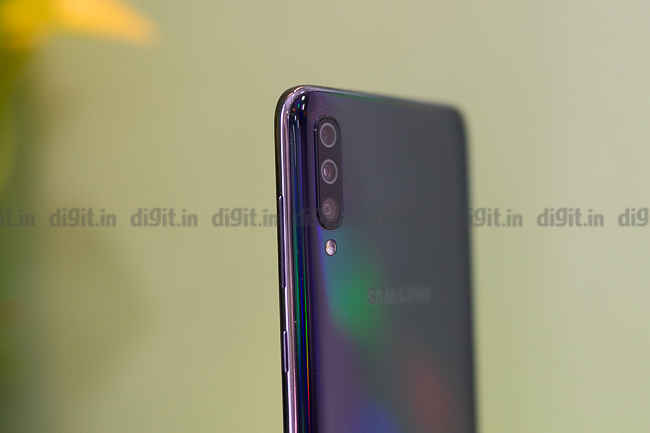
Overall, the design of the Samsung Galaxy A70 is definitely more premium for the weight-class its throwing punches in. Would have been nice if the phone had an IP rating, which would have definitely made it a lot more lucrative, but for now, it’s a feature we can live without.
Display
The Samsung Galaxy A70 comes with an FHD+ Super AMOLED display, with a resolution of 2400×1080. Given the 6.7-inch display and the water-drop notch that houses the front-facing camera, the pixel density is sitting at roughly 393 ppi. In terms of usability, the Super AMOLED display shines in the mid-range segment, besting most with its vividness and colour reproduction. Capable of peak brightness of 578 lux and a minimum of 7 lux, the A70’s display offers a fairly good gamut of visibility.
Using the phone outdoors, we see the Super AMOLED panel retain its contrast and saturation at peak brightness. Where it falters is in its handling of reflections. We found the Samsung Galaxy A70’s display to be oddly reflective, something that we haven’t seen in a while on a Samsung panel. The display does not come with a screen protector pre-installed, which usually tends to be the spoilt-sport in such cases, but turns out, the A70’s panel is just reflective. Dark coloured content tends to be incredibly difficult to view due to ambient reflections. There really is no way around this problem except to either cup the display with your hand or to find a spot with some shade. Indoors, however, the reflections are not a problem. The display dims down to 7 lux, which again is slightly on the higher side for AMOLED displays, but it is still comfortable to use in pitch-dark conditions.
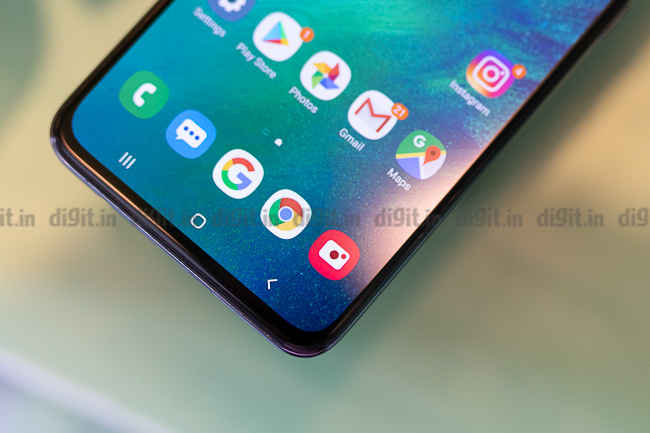
So, to sum up, the Super AMOLED display on the Samsung Galaxy A70 is beautiful for watching movies and what not and great for gaming given the real-estate. Where it falters is in outdoor viewability, where dark coloured content tends to become very difficult to see due to reflections. Barring that, the A70 has an incredibly vivid display that is hard not to like.
Performance
Samsung has chosen to release the Samsung Galaxy A70 with the Qualcomm Snapdragon 675 chipset paired with 6GB RAM. We are pretty happy with Samsung’s choice of going with a Snapdragon processor over the Exynos, given the former’s superior GPU performance. We benchmarked the Samsung Galaxy A70 in our usual suite of tests and here is how the phone stacked up.
CPU Benchmark
In our CPU tests, the Samsung Galaxy A70 and the Xiaomi Redmi Note 7 Pro were fairly neck to neck, with the former scoring higher in Mobile XPRT and the latter having a hair higher score in AnTuTu and Geekbench. The two phones’ final CPU benchmark scores are within 4 points of each other, which is considered well within the margin of error. Given that they both run off the Snapdragon 675, this isn’t surprising.
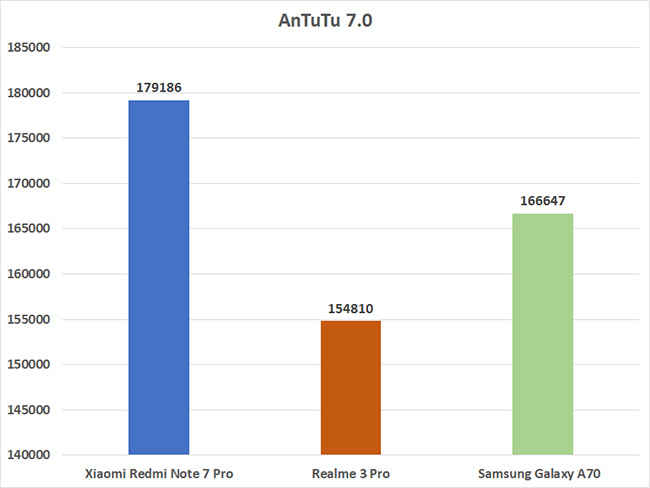
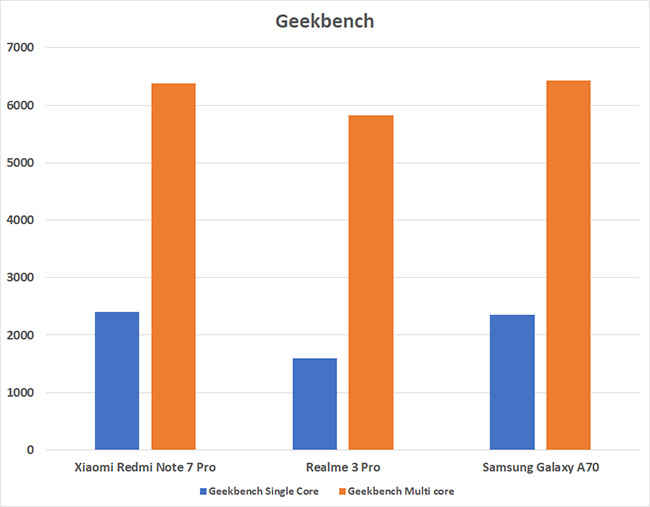
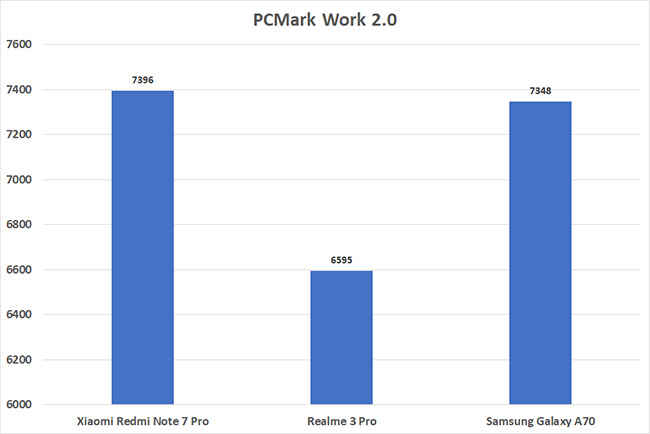
GPU Benchmarks
The Qualcomm Snapdragon 675 houses the Adreno 612 GPU. Surprisingly, our GPU benchmarks pegged the Xiaomi Redmi Note 7 Pro as a leader in most benchmarks, with the A70 coming ahead in AI-related tasks. On both 3DMark and GFXBench’s trio of tests, the Redmi Note 7 Pro inches ahead of the Samsung, but again, only by a slim margin. In terms of real-world performance though, the Samsung Galaxy A70 does not disappoint, scoring a glorious 30fps in PubG Mobile with 92 percent stability and 30fps in Asphalt 9, with a 94 percent stability.
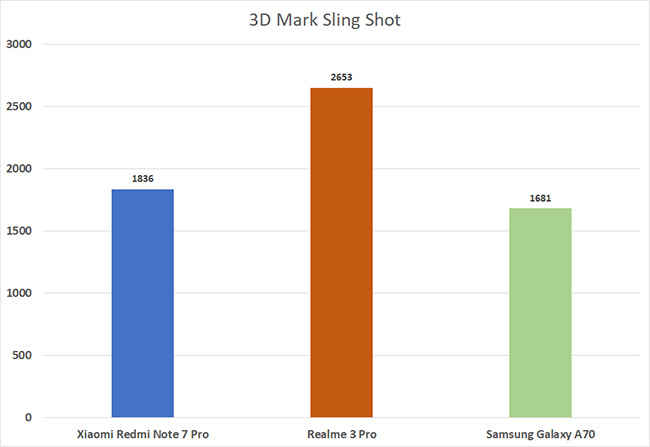
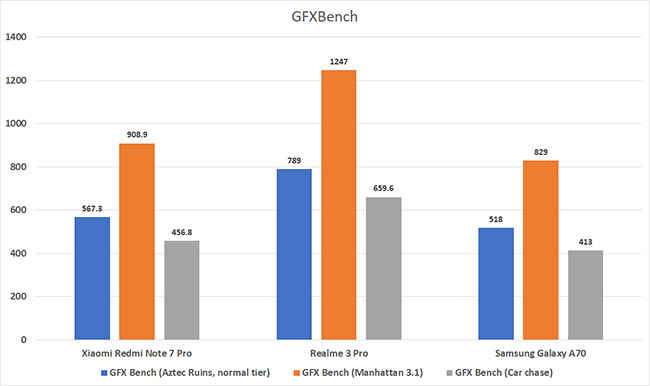
Using the Phone
After having used the Samsung Galaxy A70 for a better part of two weeks as my primary phone, there were some notable instances with the device. Initially, after setting up and restoring the phone from a previous backup, we had issues with the phone’s performance. There was noticeable lag in using the search in the Settings menu, and even in bringing up things like Samsun Pay. Resetting the phone and setting it up as new solved the problem. This also boosted our PubG mobile and Asphalt 9 numbers for Gamebench. Browser windows open up smooth and if you want even snappier performance, you can always change the value of animation transitions from 1x or 0.5x in developer settings.
Overall, the performance of the Samsung Galaxy A70 was surprisingly satisfactory, although, there were a few minor and one major issue with the phone, which we discuss below.
Camera
The Samsung Galaxy A70 sports quiet a commendable camera stack. There’s the 32-megapixel primary camera with an aperture of f/1.7. This is the GD1 sensor which can spit out images in 32 megapixels or bin them into an 8-megapixel image with better quality.
The Samsung Galaxy A70 by default shoots at 8 megapixels and changing the resolution isn’t something you’d find in the camera settings like one would traditionally expect. Instead, it is an icon on top of the camera interface, which is very easy to mistake for “aspect ratio” settings rather than resolution.
Disclaimer: The images below have been resized for web. You can see all the full-size images in our Flickr Gallery embedded below
Shooting in daylight, the Samsung Galaxy A70 produces some very good-looking images, but stutters in handling backlit subjects. In some cases, it managed to expose properly for the backlit subject and in some, it grossly underexposed the subject, despite repeated attempts to fix the situation. The autofocus also worked fairly well, although we were surprised to find the rather large minimum focusing distance on this camera, preventing any kind of macro photos.

Difficult to get close to a subject for macro photos

Good detail reproduction for shots taken in the day
The Galaxy A70 has a triple camera setup, the second of which is an 8-megapixel ultra-wide camera with an aperture of f/2.2. Frankly, we’re not very happy with the ultra-wide performance on any Samsung camera. It lacks autofocus and exhibits wild amounts of distortion, not conducive for shooting people or straight lines in general.
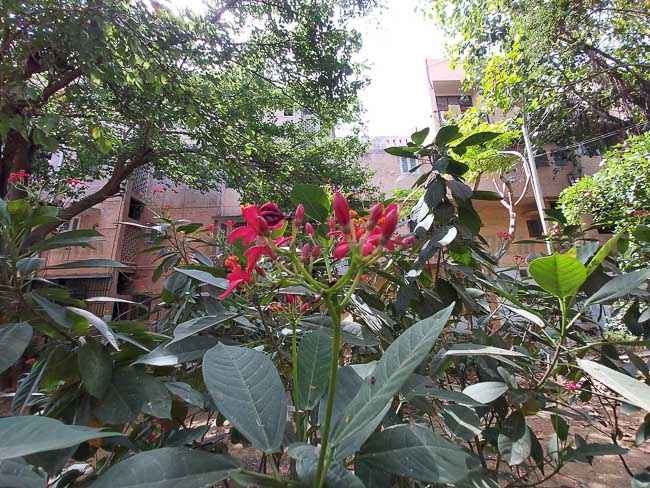
The ultra-wide camera handles daylight scenarios well
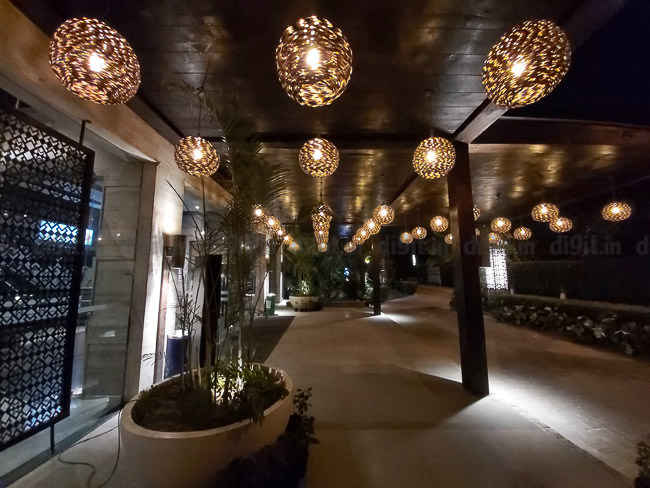
but falters in low light
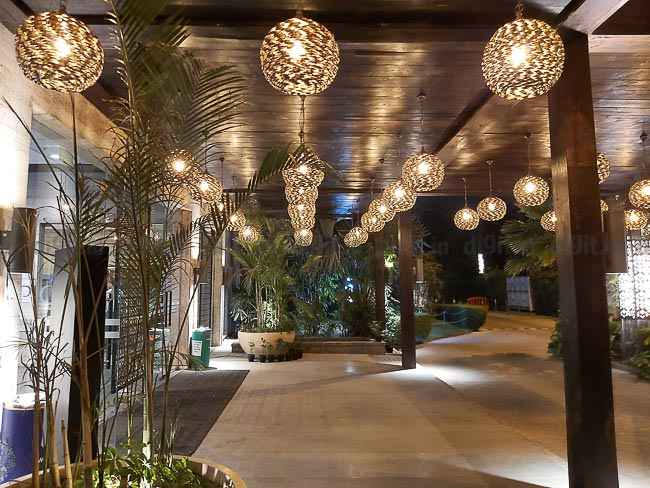
Same shot as above, taken with the A70’s primary camera
When moving to low light, we see the Samsung Galaxy A70’s primary camera do relatively well, delivering noise-free, sharp images. It does tend to lose sharpness towards the edges, a feature that is once again far more pronounced in the ultra-wide camera. You can see a larger collection of images in the Flilckr Gallery below
Selfie Camera
The front facing camera on the Samsung Galaxy A70 uses the same 32-megapixel sensor as the primary rear camera but has a slightly smaller aperture of f/2.0. this results in slightly lesser quality of selfies in comparison to the rear camera, but it is still a rather impressive result. Day-time selfies are again clear and sharp, but in order to achieve the sharpness, you have to turn off the beautification. In low light, the camera does falter due to the low aperture. Had Samsung retained the f/1.7 aperture on the front facing camera as well, we’d have a very strong contender in this segment, but for now, it remains a just about average shooter.
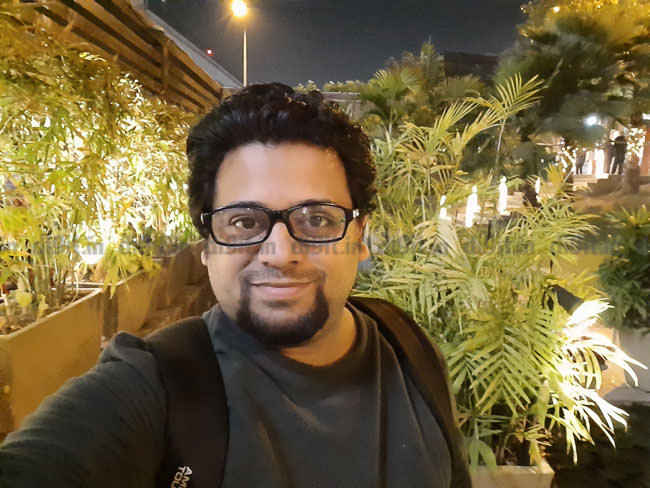
Low light selfies are vibrant, but lack detail
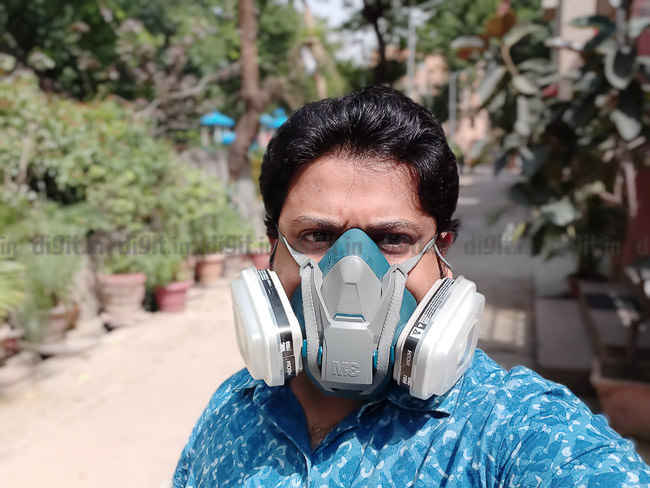
Live focus mode does a good job of separating the subject
Battery
The Samsung Galaxy A70 sports a massive 4500mAh battery, which it manages to pack into a relatively slim 7.8mm thick body. On Geekbench and PCMark, the battery clocks 10 hours, 21 minutes and 10 hours and 48 minutes of runtime respectively. Both the benchmarks start at 100 percent battery, Geekbench ends when the battery is completely depleted and PCMark 8 stops when there is 20 percent charge left. We supplemented these numbers with our video loop test, on which the phone lasted well over 11 hours. Suffice to say, the Samsung Galaxy A70’s battery life is commendable as far as benchmarks go.
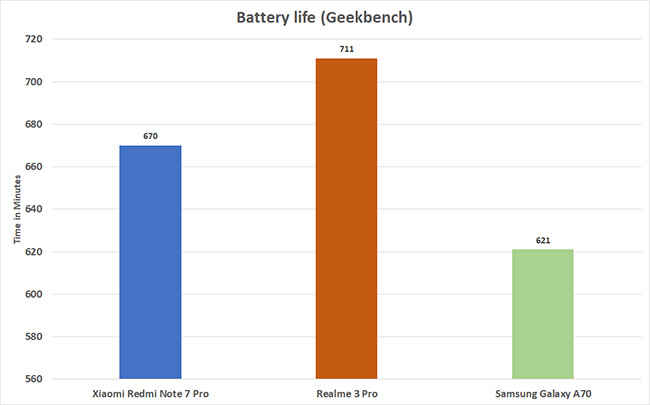
In real life usage, we got about 2 days’ worth of usage out of the phone, which is pretty impressive. The supplied 25W fast charger tops up the battery in roughly 100 minutes, which is also equally impressive. The downside here, however, is that trying to charge the A70 using a regular charger will take way too much time, so you’re going to have to lug the supplied charger and the Type-C to Type-C cable with you in order to get the fastest charging speeds. Buyers of the A70 should feel a little satisfied knowing that Samsung’s flagship S10 series also does not come with 25W fast charging, but the mid-range smartphone does.
The Mighty Pitfall: Fingerprint Scanner
The Samsung Galaxy A70 uses an optical under-display fingerprint sensor as its primary unlocking method and I have to say, after using the S10+, this was a very sore point for me. The fingerprint sensor here is not only painfully slow, even in comparison to other optics-based solution, but also had too many false rejections. Typically, the sensor would take a good 1-2 seconds to unlock (when it did), but in most cases, it would just not recognize the fingerprint sensor. Thankfully, the fingerprint sensor’s performance is something that can be improved through software updates (to some extent) and we can only hope that Samsung will address this issue with the utmost urgency.
The Star Feature: Samsung Pay
One of the biggest value additions to the Samsung Galaxy A70 is the inclusion of Samsung Pay. We’re not talking about the crippled version seen on the entry-level Samsung devices, but the full-blown, MST enabled version. This is the same Samsung Pay we have seen on Samsung’s flagship devices. Samsung Pay has been one of the most compelling reasons for me using a Samsung smartphone for many years now, with the convenience of Samsung Pay being unmatched when it comes to smartphone-based payments in India. Samsung Pay works just as advertised and we hope that Samsung would bring this feature to more devices in the mid-range segment in the near future.
Software and UI
Given that the Samsung Galaxy A70 runs on OneUI, it comes with the newest version of Android (Pie) and is updated to the latest security patch. You also get a far more refined user experience with many elements of Samsung’s operating system being cleaned up. The new UI is neat and snappy, although just not as fluid as OnePlus’s OxygenOS or Google’s own stock Android.
OneUI offers a number of familiar and new features, including a dark mode, the ability to apply themes from Samsung’s own theme store and even a device-care feature which is designed to optimize performance and battery life. The bloatware on the A70 is also fairly reduced, as users will be prompted to choose the Samsung apps they want to install while setting up the phone. There will still be some Samsung apps that are pre-installed which cannot be removed, like the messaging app, although you can switch over to Google’s version without any glitches.
The software on the Samsung Galaxy A70 is pretty much the same as what you get on the flagship smartphones from the company, once again, bringing a premium experience to the mid-range segment.
Conclusion
The Samsung Galaxy A70 is a mid-range phone with a few flagship features thrown in. With the A70, you’re paying for the mid-range performance, but the extra is for the extra long battery life, the stylish build and of course, Samsung Pay. On the whole, the Samsung Galaxy Note 7 ends up slightly ahead of the Redmi Note 7 Pro for its display, battery life (charging speed+SoT) and the OS experience, which nudges the overall Performance score of the A70 ahead of the Redmi Note 7’s. If we look at just the CPU, GPU and Camera performance, the Redmi Note 7 is ahead by a solid 8 points. If you’re looking for a wholesome package, then you may want to give the Samsung Galaxy A70 a strong consideration, but if you’re on a tight budget and want just performance and camera chops, you would be happy settling for the Redmi Note 7 Pro.
[ad_2]
Source link







